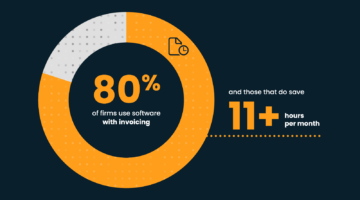 It wasn’t that 2016 was a bad year for law firms. It just wasn’t a very good year.
It wasn’t that 2016 was a bad year for law firms. It just wasn’t a very good year.
On the other hand, like a lot of 2016, the year is best measured by your point of view. If you’re a fan of anyone from Bowie to Gene Wilder to Princess Leia or a typical member of the Am Law 200, you didn’t have a great year. That said, if you’re a white supremacist, a Patriots fan, or one of the elite law firms perched atop the Am Law 50, 2016 wasn’t all that bad.
The Citi Private Bank 2016 report — an annual survey of 193 firms (77 Am Law 100 firms, 53 Second Hundred firms, and 63 niche/boutique firms) — shows a relatively bland year in the legal industry, with a noticeable break between the performance of top firms and the rest of the pack. Not that we weren’t expecting this based on the quarterly reports Citi put out throughout 2016, but it’s more evidence of a trend we’ve seen for the last several years.

Billables Are Not The Same As Cash Flow. Here’s Why That’s Important.
Findings from the MyCase 2025 Legal Industry Report.
As Gretta Rusanow of Citi explained in Am Law Daily:
As a further indicator of industry dispersion, we saw that the 15 most profitable firms who report to us outperformed the industry, with PPEP up 6.6 percent and net income up 6.9 percent. As most of these firms are in the Am Law 50, we noted that they drove the strong performance of that segment, by increasing both demand and rates, and collecting faster than in 2015. The Am Law 50 outperformed other segments in profit growth, and was the only segment to beat its 2015 performance. Am Law 51-100 and Second Hundred firms saw expense growth outpace revenue growth, as both segments saw modest rate increases and a slowing of collections, and in the case of the Am Law 51-100 firms, a 1.2 percent drop in demand. Going into 2017, niche firms were the only segment to see stronger year-end inventory growth compared to 2015, and only just (up 3.7 percent, compared to 3.6 percent).
Don’t expect this trend to reverse itself anytime soon just because the economic outlook is rosy. The market may be surging, but the big banks are substantially driving that train, and those are exactly the clients that tap the elite firms to do all their work.
Speaking of expense growth, that’s another figure that looks steady across the industry as a whole, but when you break down the players, it appears to hit the Am Law 51-200 much worse:

Why Some Firms Are Leading The Market With Generative AI
A culture of innovation with strategic AI like Lexis+ AI is revolutionizing law firms by boosting efficiency and deepening client relationships.
Expense growth of 3.4 percent was consistent with 2015, and might surprise many, in light of the midyear associate salary increases. The key here was careful management of operating expenses. Compared to the 3 percent growth in operating expenses seen in 2015, the industry managed to control growth in 2016, reporting just a 1.9 percent increase. On the other hand, compensation expenses grew 5.4 percent, much higher than the 3.8 percent increase reported in 2015. While lawyer head count growth contributed to this, we also believe the increase in associate salaries was a key driver. The full effect of these increases is yet to be reflected in the results, as we’ve heard anecdotally that while many firms implemented these increases in mid-2016, others delayed implementing them to the fourth quarter of 2016 or the start of 2017.
As we enter a full year of higher salaries and more lawyers, no doubt firms will find it a challenge to manage expense growth. Of greater concern is the pressure that the associate salary hike is already having on many firms who matched salary increases for competitive, rather than performance, reasons. In our conversations with firm leaders, many express bafflement as to why so many firms adopted the increases when their productivity and profitability results couldn’t support them.
We certainly expressed bafflement. So did Professor Bill Henderson when we talked to him about it. This isn’t to say associates didn’t deserve a bump for their hard work, just that the rapid succession of “me too” salary bumps — especially across all markets — seemed extreme. And the fact that a number of firms are entering 2017 with expenses their performance didn’t justify is just one more reason to expect the rich firms to get richer in 2017.
Looking forward:
While we are cautiously optimistic that 2017 will be another year of modest growth, in our conversations with law firm leaders, we note a higher than usual level of uncertainty, caused by the confluence of current macro events. As firm leaders remind us, we are in the early days of the Trump administration. The timing and scope of Brexit remain unclear. There are several national elections in key economies in 2017, in an environment of populism and anti-globalization. On the other hand, the strong performance of equity markets and continuing low bond yields are positive signs for transactional activity. So is President Trump’s rhetoric about infrastructure spending, lowering taxes, regulation, healthcare and energy. In this context, our outlook for 2017 is modest industry growth, with continued dispersion and volatility, likely driving further consolidation.
In other words, we may all die in 2017, but Wachtell is still going to have a good year.
Citi Report: Growth Slowed in 2016 [Am Law Daily]
Earlier: Biglaw Strikes Back: The Rich Firms Get Richer This Quarter
 Joe Patrice is an editor at Above the Law and co-host of Thinking Like A Lawyer. Feel free to email any tips, questions, or comments. Follow him on Twitter if you’re interested in law, politics, and a healthy dose of college sports news.
Joe Patrice is an editor at Above the Law and co-host of Thinking Like A Lawyer. Feel free to email any tips, questions, or comments. Follow him on Twitter if you’re interested in law, politics, and a healthy dose of college sports news.